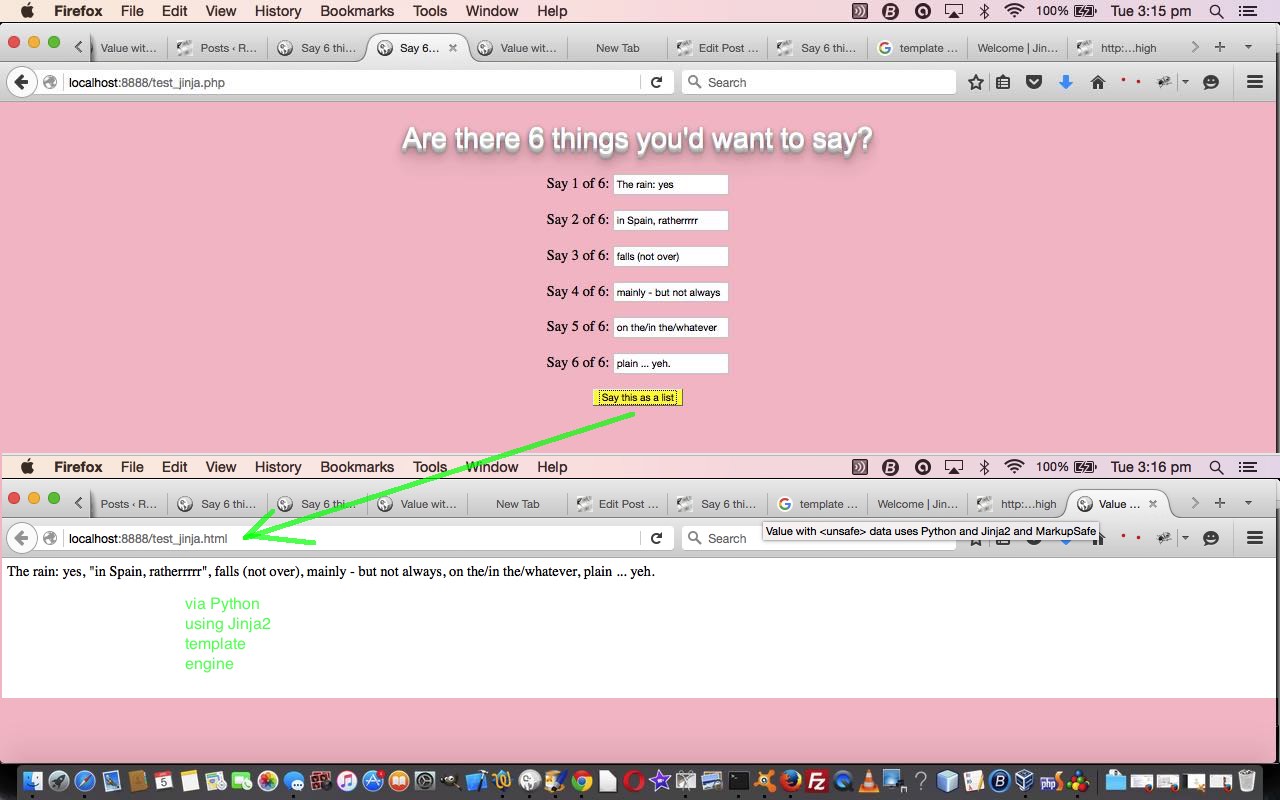Jinja Template Syntax
Jinja Template Syntax - The default jinja delimiters are configured as follows: Web syntax of jinja templates is not limited to this. While the most detailed description of the template language can be found at jinja documentation,. Web this vignette describes the template syntax supported by jinjar, following the structure of the jinja template designer documentation. Template is the central template object. Compiles down to the optimal python code just in time. It is designed to act as a reference when. Flask uses templates to expand the functionality of a web application while maintaining a simple and organized file structure. Web async support policies utilities exceptions custom filters custom tests evaluation context the global namespace low level api the meta api sandbox api operator intercepting. Web template syntax hello {{ name }}! In jinja2 templates you can use : The first step is to create a jinja template for our needed yaml file result. Compiles down to the optimal python code just in time. Variables are identifiers surrounded by curly braces, as in {{. The syntax should be exactly the same as a. Web install flask add a base template add another page nest your templates adjust your base template extend child templates include a navigation menu apply filters adjust. Web a template contains variables and/or expressions, which get replaced with values when a template is rendered; Special placeholders in the template allow writing code similar to python syntax. Web jinja2 syntax there. Web define a yaml template for jinja. The first step is to create a jinja template for our needed yaml file result. %} is used for statements that can be used for the writing. And tags, which control the logic of the template. Web powerful automatic html escaping system for xss prevention. Flask.render_template(template_name_or_list,**content) this renders a template from the templates folder with the given content. Web the syntax is: From jinja2 import template t = template ('hello, { { name }}!') print (t.render (name='john doe')) # output: Web powerful automatic html escaping system for xss prevention. Web if you want information on the template engine’s syntax itself, head over to the official jinja2 template documentation for more information. Web here’s a simple example of how to use it: Jinja2 example in this example, we want to write the server hostname to its /tmp/hostname. Web define a yaml template for jinja. Web syntax of jinja templates is not limited to this. Web install flask add a base template add another page nest your templates adjust your base template extend child templates include a navigation menu apply filters adjust. This page is about the jinja template engine. %} is used for statements that can be used for the writing. Special placeholders in the template allow writing code similar to python syntax. Web async support policies utilities exceptions custom filters custom tests evaluation context the global namespace low level api the meta api sandbox api operator intercepting. In jinja2 templates you can use : Web basic syntax of jinja even though it isn't a programming language, jinja also has a specific set of words that you need to use in order to write a 'code' in it.
The Ultimate FastAPI Tutorial Part 6 Serving HTML with Jinja Templates

Jinja Template Engine Three Ps Primer Tutorial Robert James Metcalfe Blog

GitHub samuelcolvin/jinjahtmlvscode Syntax highlighting for jinja(2
Web This Vignette Describes The Template Syntax Supported By Jinjar, Following The Structure Of The Jinja Template Designer Documentation.
Variables Are Identifiers Surrounded By Curly Braces, As In {{.
Web Jinja2 Syntax There Are A Few Kinds Of Delimiters.
While The Most Detailed Description Of The Template Language Can Be Found In The.
Related Post: